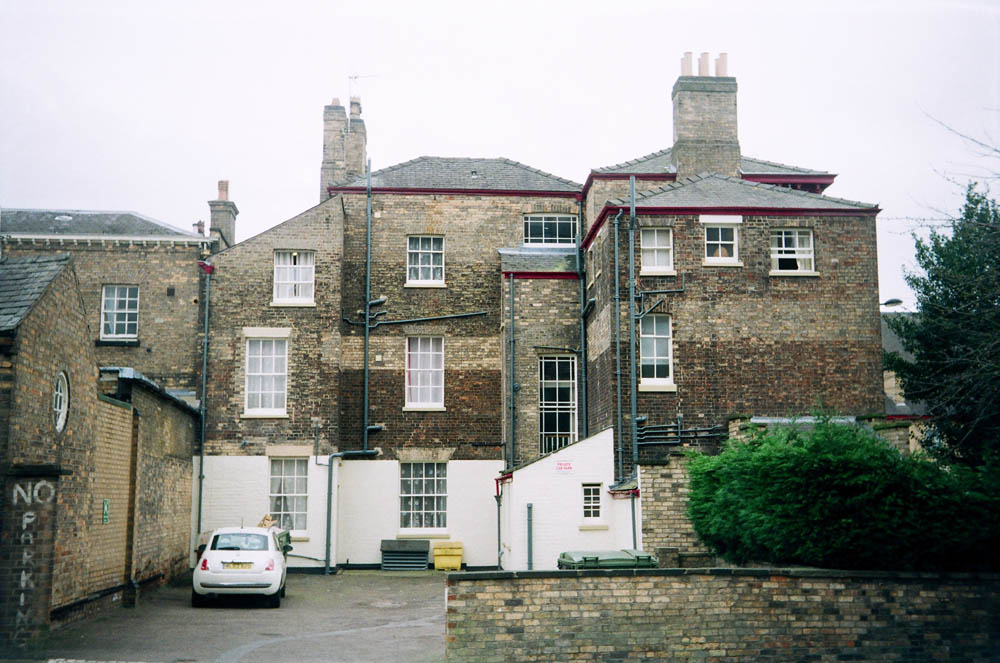This is a West German camera made between 1953 ad 1957. It is a simple viewfinder camera which is clearly built to a price but quite well made within that constraint. This camera has been well used - witness the scuff marks around the tripod boss - and, at least latterly, stored badly - the nickel plating is corroded indicating that storage has been been somewhere damp. The pictures are of the camera as I received it. I shall be doing an intensive clean this week and I shall post a picture of the clean camera for comparison.
 |
| Wirgin Edixa 1 (C) John Margetts |
lens: Steinheil Cassar triplet
focal length: 40 mm
apertures: f/3.5 to f/16
focus range: 0.9 m to infinity
lens fitting: fixed
shutter: Gauthier Vero
speeds: 1/25, 1/50, 1/100, 1/200
flash: PC connector
film size: 35 mm
place. Being a viewfinder camera, it has very few controls.
Starting, as always, with the top plate. On the right-hand end is the film advance lever. This moves through around 180 degrees but needs two throws to advance one frame. The lever is on a ratchet and several small movements will have the same effect. This is one area where the camera is clearly built to a price as the lever consists of a bent piece of metal - not the most comfortable of levers in use. To the left of the film advance lever and close to the front edge of the top plate is the shutter release button. This is fairly small, nickel plated, and is threaded for a standard cable release. It is well placed for the right-hand index finger in normal use.
The centre portion of the top plate is raised. At the front of this raised portion is the name 'Edixa' in Art Deco lettering. Behind the lettering is a screw head (7 mm diameter) which is used to reset the frame counter. This needs to be set to the film length as it counts down to zero - i.e. it tells you how many shots are left rather than how many are taken.
 |
| Wirgin Edixa 1 |
On the left of the top plate (left of the raised portion) is the rewind knob. There is no fold-out crank here, but the central portion lifts up to provide a fairly ergonomic grip.
The front of the camera has the shutter housing centrally placed. The shutter is a Gauthier Vero shutter which is basically a cut-down Prontor shutter (a further evidence of design to a price). This shutter offers four speeds (1/25, 1/50, 1/100, 1/200) plus B There is no self-timer on a Vero shutter and there is no flash synchronisation setting - flash is provided for with a PC socket on the side of the shutter housing - this is X synch for electronic flash guns.
The iris diaphragm offers apertures from f/3.5 to f/16. The range of shutter speeds together with the range of apertures allows for good exposures with most films available 50 years ago and most light conditions. This might seem a bit meagre by modern digital standards but I have never found it to be limiting in my photography.
The lens is a Steinheil Cassar lens. The Cassar is a triplet and Steinheil seem to have generally supplied to the lower end of the market but I have always found them to be more than acceptable when stopped down to f/8 or f/11. See the test results further down to see how this particular lens performs. The lens has a focal length of 40 mm which is very slightly wide compared to 'normal' for 35mm photography (which is 43mm). The lens fascia bears the legend 'VL' which I take to mean that the lens is coated - it certainly has a slight colour cast to it. Focusing is by moving the front element of the lens (front cell focusing) rather than the whole lens assembly (unit focusing). This is generally considered inferior to focusing by moving the whole lens but any difference is technical rather than practical. The lens serial number is 889580 which should help me to date the camera precisely if/when I can find appropriate information on the Interweb.
The viewfinder sits above the shutter/lens and is much as I would expect for the time - i.e. rather small by modern standards but much bigger than was usual in the 1930s. It measures 8 mm by 12 mm. To the right of the viewfinder, below the shutter release button, is the maker's name - 'Wirgin' - again in Art Deco style.
There are three items on the back of the camera - all on the top plate. Centrally is the viewfinder eyepiece. this is round with a diameter of 5 mm. This has a circular brass surround which is dangerous to wearers of modern spectacles - mine have extensive scratches on the right-hand lens caused by using old cameras. To the right of the viewfinder eyepiece is the frame counter window. This is a meagre 2.5 mm square and is right at the limit of my eyesight. Right of this, under the film advance lever, is a small slide. Moving this to the left allows the film to be rewound.
Test film
I have now finished the test film and had it developed and scanned by Snappy Snaps in Lincoln. Main negative is the presence of vignetting. Exposure is spot on as is focus (mostly focused at infinity).
 |
| Stamp End lock, Witham |
 |
| View from the office window |
 |
| Our road |
 |
| Buildings, Dane Gate, Lincoln |
 |
| Walkway, St Mark's Square, Lincoln |



No comments:
Post a Comment